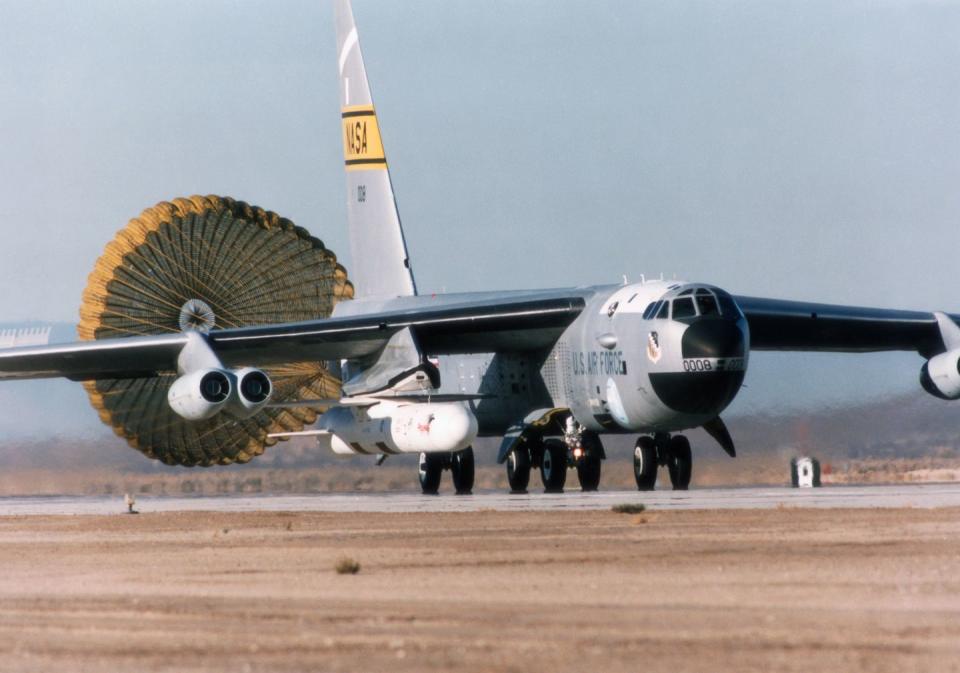A New Space Force Satellite Just Took Off for Space—From a Plane
The U.S. Space Force launched a new "space domain awareness" satellite on Sunday from California's Vandenberg Air Force Base.
Northrop Grumman's Pegasus XL rocket launched the satellite into space, while an old L-1011 airliner launched the rocket, itself.
This endeavor is part of the Space Force's efforts to quickly generate space launches without fixed launch pads.
On June 13, the U.S. Space Force launched a new intelligence-gathering satellite from Vandenberg Air Force Base, located along the coast of southern California. But the secretive satellite, itself, is just one small piece of the story.
This mission, designated the "Tactically Responsive Launch 2," or TacRL-2, relied on Northrop Grumman's Pegasus XL—a winged rocket that is carried aloft by an airliner—to launch the satellite into space. In this case, a Lockheed L-1011 Tristar commercial airliner, dubbed "Stargazer," did the carrying.
✈︎ Don't miss our best-in-class military stories. Join our squadron.
It's all a part of the Space Force's efforts to decentralize space launches, generating missions on shorter notice, all without the need for a traditional launch pad.
The U.S. has only a handful of dedicated space launch facilities, located in California and Florida. Those facilities would be high-priority targets in a major war, open to sabotage or missile attack. So, a series of successful attacks could delay U.S. space launches for weeks or even months, hindering the deployment of new military satellites. TacRL-2 aims to reduce the Space Force's reliance on such large, vulnerable bases.

A typical Pegasus XL launch involves a Stargazer lifting off from a conventional runway. From there, it ascends to an altitude of 40,000 feet and launches the Pegasus rocket. The high-altitude launch allows the Pegasus rocket to do away with the initial launch stage, making for a smaller and more compact system. All told, Pegasus XL can boost a 1,000-pound payload into low-Earth orbit. This use of aircraft as a space launch system would allow the Space Force to conduct launches from almost any serviceable airport.
According to Chief of Space Operations Gen. Jay Raymond, a secondary goal of TacRL-2 was to expedite the planning and execution of launches. The payload took just 11 months to build, as compared to the 24 to 60 months it typically takes to build a satellite. And, the launch took place just four months after the Space Force signed a contract with Pegasus XL operator Northrop Grumman. Usually, that process can take years.
#NGIS #Pegasus #TacRL-2 launch first and second stages seen over the lights and @Marine_layer of Santa Maria California for the US Space Force. The rocket was dropped just after 1:00 AM local from a Lockheed L-1011 flying over the Pacific @northropgrumman @NASASpaceflight pic.twitter.com/nbOFfj1nax
— D. Stamos/Helodriver (@SpacecoastPix) June 13, 2021
The mission payload was, according to NASA Spaceflight, a small satellite built as a technology demonstration. Little is publicly known about the satellite, other than that the Space Force procured it with off-the-shelf materials with "space domain awareness" in mind.
Space domain awareness typically involves detecting, cataloging, and monitoring man-made objects in space, from orbiting space junk to the satellites of potential adversaries. So, TacRL-2's payload likely has the ability to observe other satellites.
🎥 Now Watch This:
You Might Also Like

